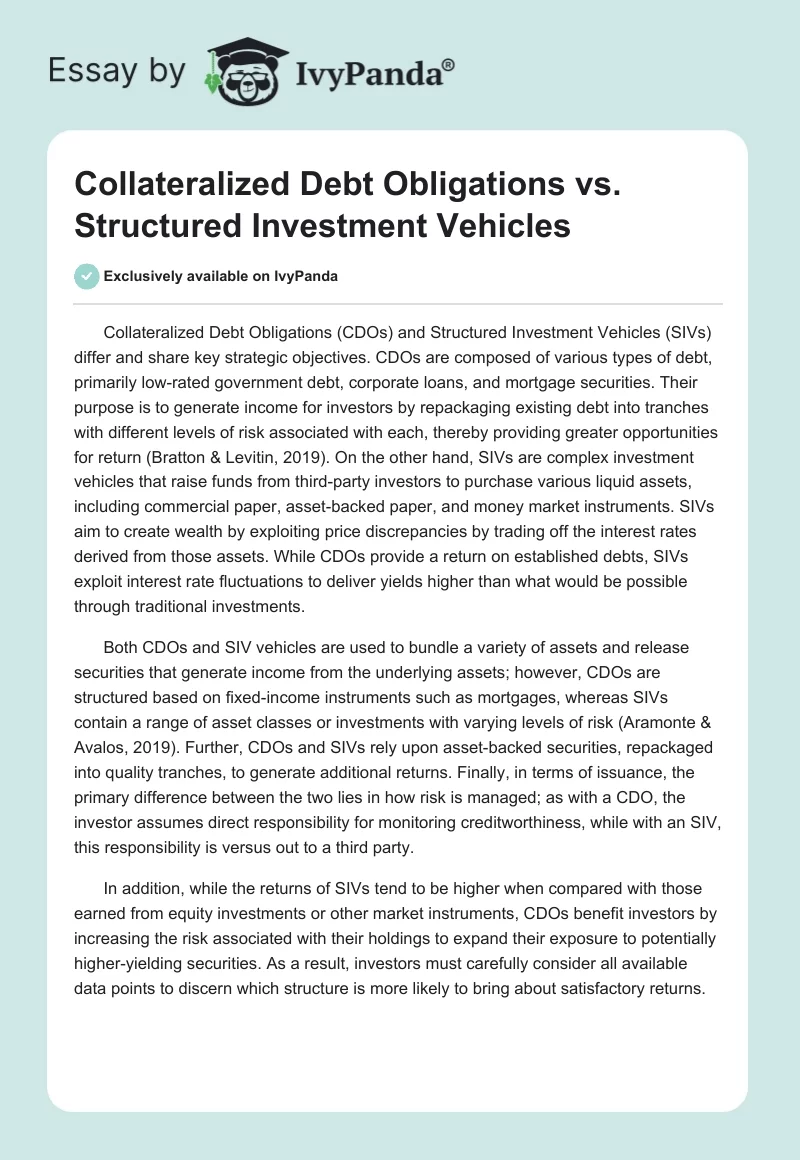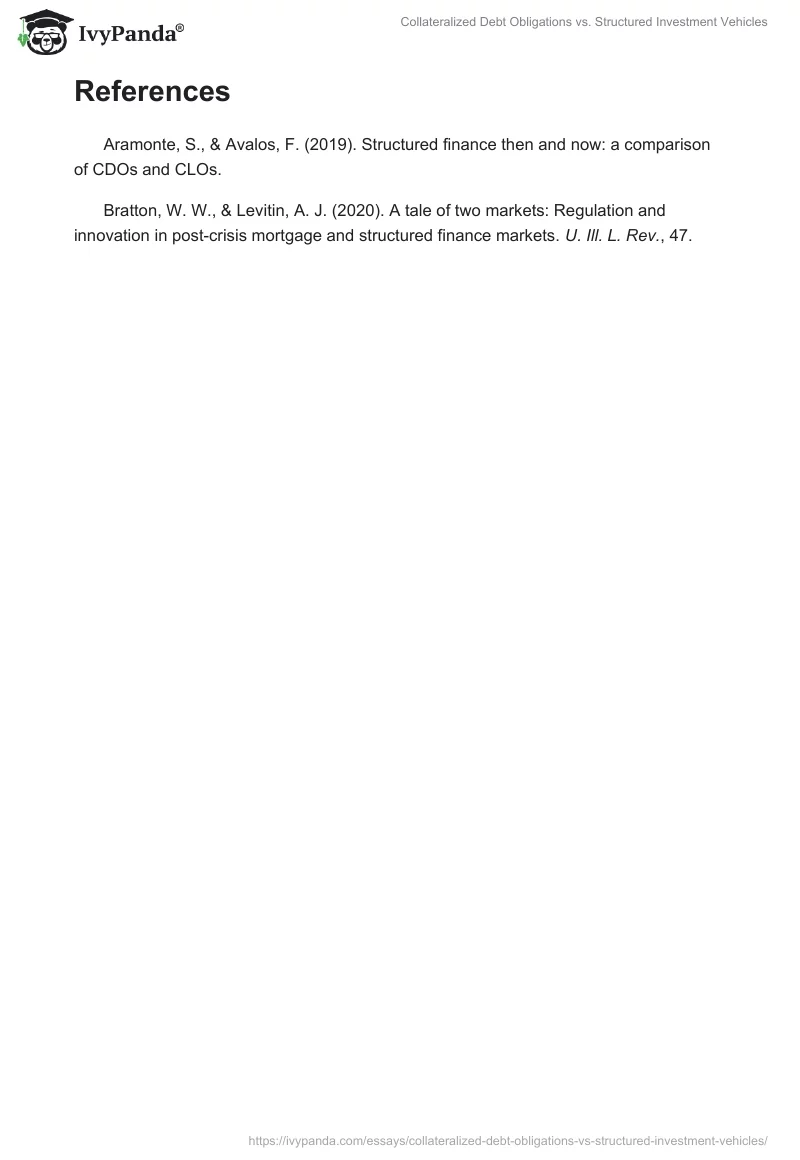Collateralized Debt Obligations (CDOs) and Structured Investment Vehicles (SIVs) differ and share key strategic objectives. CDOs are composed of various types of debt, primarily low-rated government debt, corporate loans, and mortgage securities. Their purpose is to generate income for investors by repackaging existing debt into tranches with different levels of risk associated with each, thereby providing greater opportunities for return (Bratton & Levitin, 2019). On the other hand, SIVs are complex investment vehicles that raise funds from third-party investors to purchase various liquid assets, including commercial paper, asset-backed paper, and money market instruments. SIVs aim to create wealth by exploiting price discrepancies by trading off the interest rates derived from those assets. While CDOs provide a return on established debts, SIVs exploit interest rate fluctuations to deliver yields higher than what would be possible through traditional investments.
Both CDOs and SIV vehicles are used to bundle a variety of assets and release securities that generate income from the underlying assets; however, CDOs are structured based on fixed-income instruments such as mortgages, whereas SIVs contain a range of asset classes or investments with varying levels of risk (Aramonte & Avalos, 2019). Further, CDOs and SIVs rely upon asset-backed securities, repackaged into quality tranches, to generate additional returns. Finally, in terms of issuance, the primary difference between the two lies in how risk is managed; as with a CDO, the investor assumes direct responsibility for monitoring creditworthiness, while with an SIV, this responsibility is versus out to a third party.
In addition, while the returns of SIVs tend to be higher when compared with those earned from equity investments or other market instruments, CDOs benefit investors by increasing the risk associated with their holdings to expand their exposure to potentially higher-yielding securities. As a result, investors must carefully consider all available data points to discern which structure is more likely to bring about satisfactory returns.
References
Aramonte, S., & Avalos, F. (2019). Structured finance then and now: a comparison of CDOs and CLOs.
Bratton, W. W., & Levitin, A. J. (2020). A tale of two markets: Regulation and innovation in post-crisis mortgage and structured finance markets. U. Ill. L. Rev., 47.


